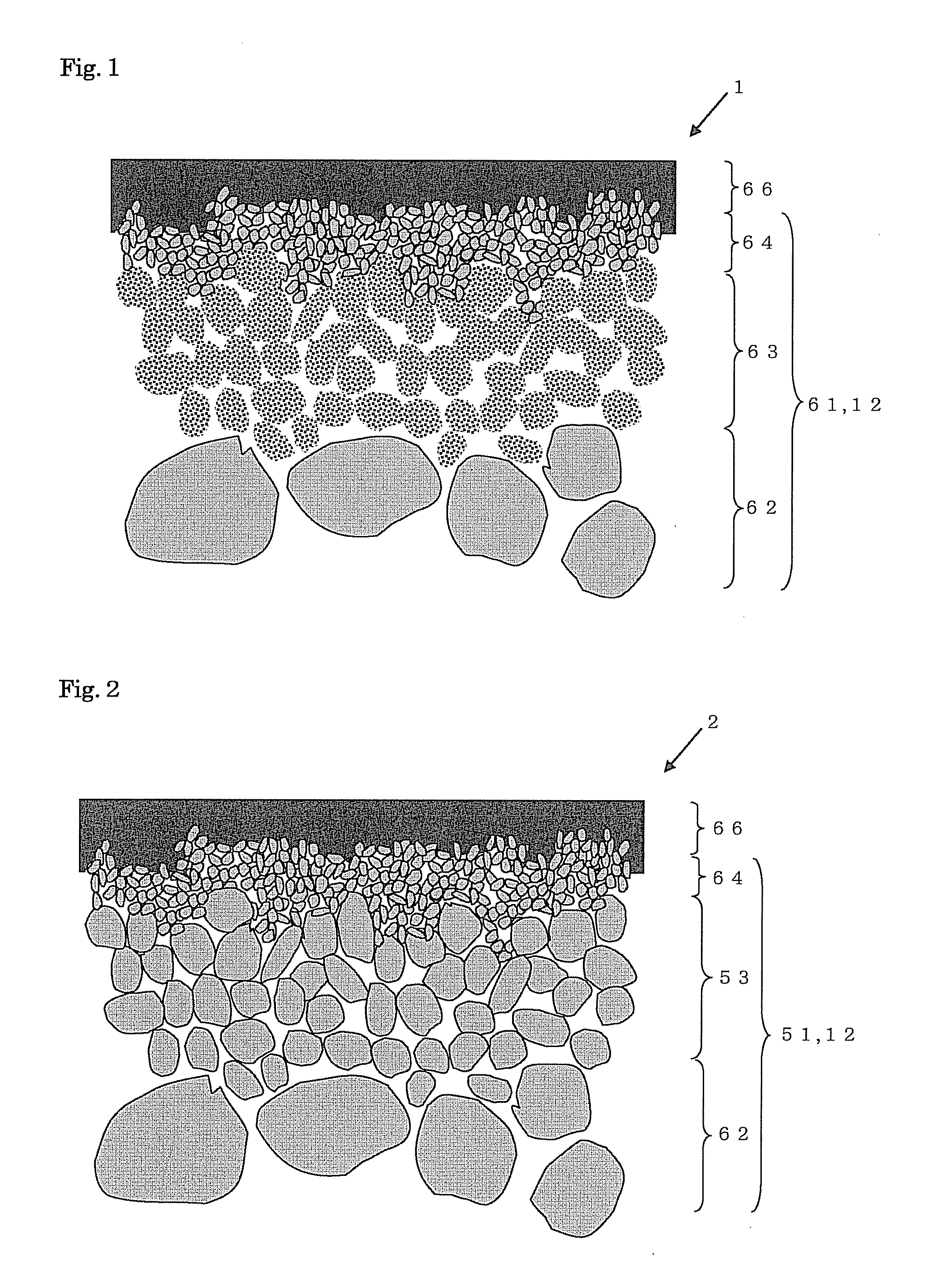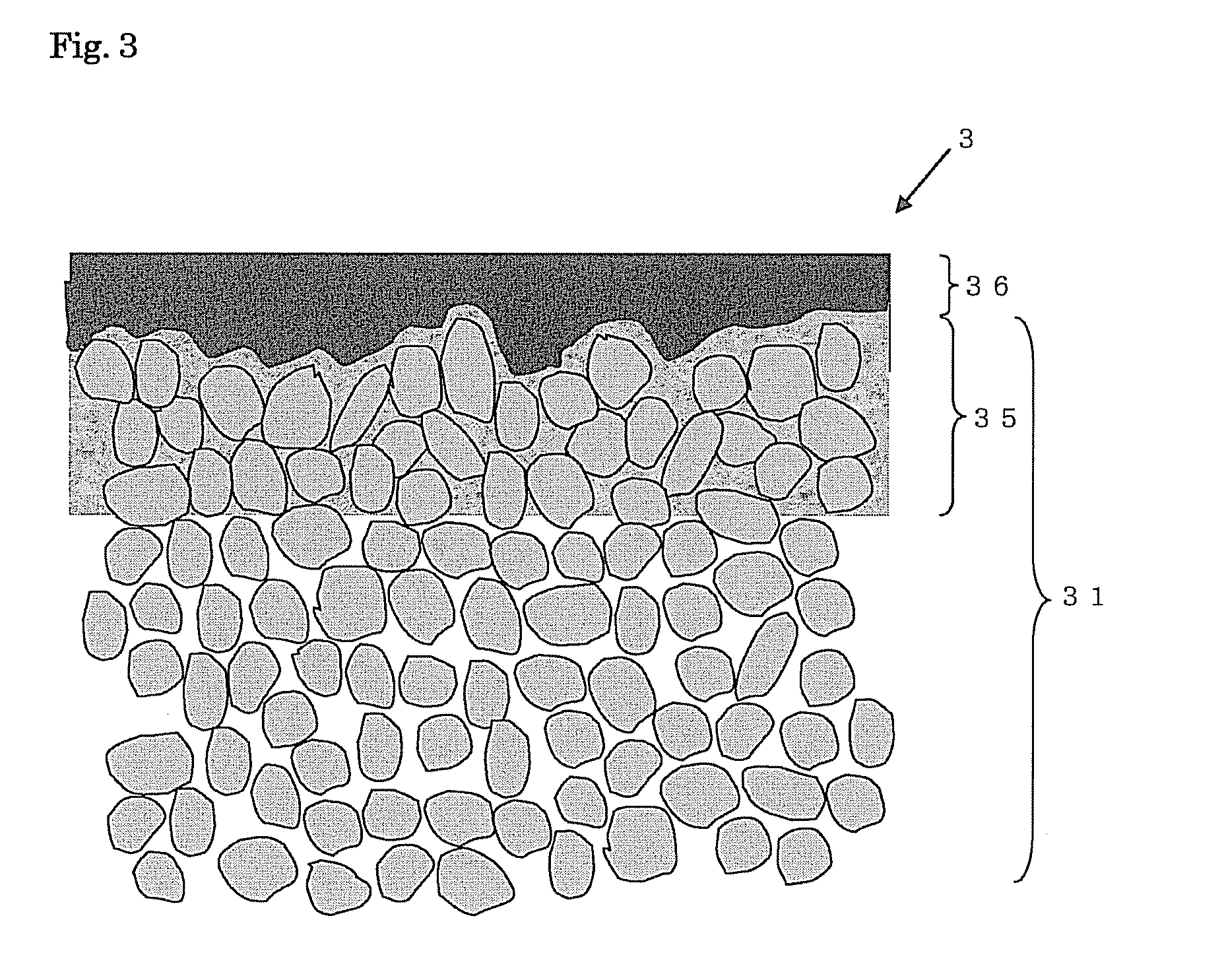Separation membrane complex, and method for manufacturing the separation membrane complex
- Summary
- Abstract
- Description
- Claims
- Application Information
AI Technical Summary
Benefits of technology
Problems solved by technology
Method used
Image
Examples
example 1
[0068]A monolith-shaped substrate having an average particle diameter of 10 to 100 μm and an average pore diameter of 1 to 30 μm was manufactured by means of forming by extrusion forming and firing. Next, the alumina particles (secondary particles) which is constituted of an aggregate having a primary particle diameter of 0.01 to 1 μm and which has an average particle diameter of 0.3 to 10 μm were deposited on the internal wall faces of the cells in the substrate obtained above by a filtration membrane-forming method with adjusting the membrane thickness by the membrane formation time, followed by firing to form an intermediate layer having a thickness of 10 μm and the average pore diameter of 0.1 to 3 μm. Then, on the intermediate layer, alumina particles having an average particle diameter of 0.03 to 1 μm were deposited by a filtration membrane-forming method with adjusting the membrane thickness by the membrane formation time, followed by firing to form a surface layer having a t...
example 2
[0071]A separation membrane complex was manufactured in the same manner as in Example 1 except that the thickness of the intermediate layer was made to be 100 μm and evaluated by the water-ethanol pervaporation separation method under the same conditions as in the Example 1. Table 1 shows the particle form (aggregate or dense body) of the intermediate layer, thickness of the intermediate layer, the pervaporation separation performance (separation coefficient, flux), and pressure loss. In addition, FIG. 4 shows a photograph of a cross section of the porous body after the carbon membrane was formed. In Example 2, two porous bodies were manufactured under the same conditions, and FIG. 4 is a photograph of a cross section of one of the porous bodies.
example 3
[0072]A separation membrane complex was manufactured in the same manner as in Example 1 except that alumina particles constituted of a dense body were used upon forming the intermediate layer and that the thickness of the intermediate layer was made to be 50 μm and evaluated by the water-ethanol pervaporation separation method under the same conditions as in the Example 1. Table 1 shows the particle form (aggregate or dense body) of the intermediate layer, thickness of the intermediate layer, the pervaporation separation performance (separation coefficient, flux), and pressure loss.
PUM
| Property | Measurement | Unit |
|---|---|---|
| Thickness | aaaaa | aaaaa |
| Volume | aaaaa | aaaaa |
| Volume | aaaaa | aaaaa |
Abstract
Description
Claims
Application Information
 Login to View More
Login to View More - R&D
- Intellectual Property
- Life Sciences
- Materials
- Tech Scout
- Unparalleled Data Quality
- Higher Quality Content
- 60% Fewer Hallucinations
Browse by: Latest US Patents, China's latest patents, Technical Efficacy Thesaurus, Application Domain, Technology Topic, Popular Technical Reports.
© 2025 PatSnap. All rights reserved.Legal|Privacy policy|Modern Slavery Act Transparency Statement|Sitemap|About US| Contact US: help@patsnap.com



